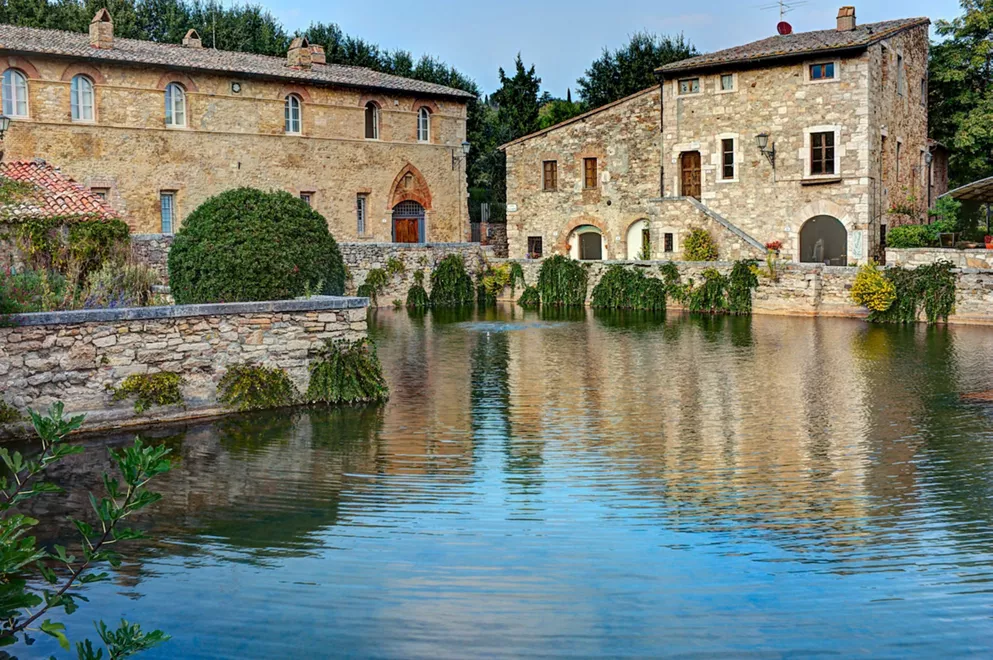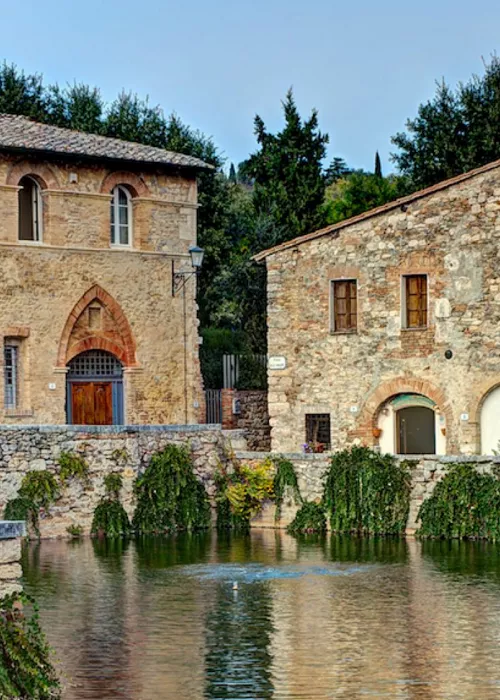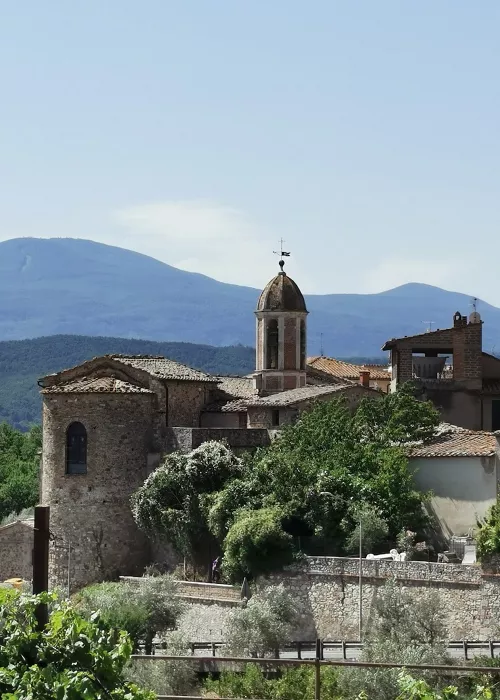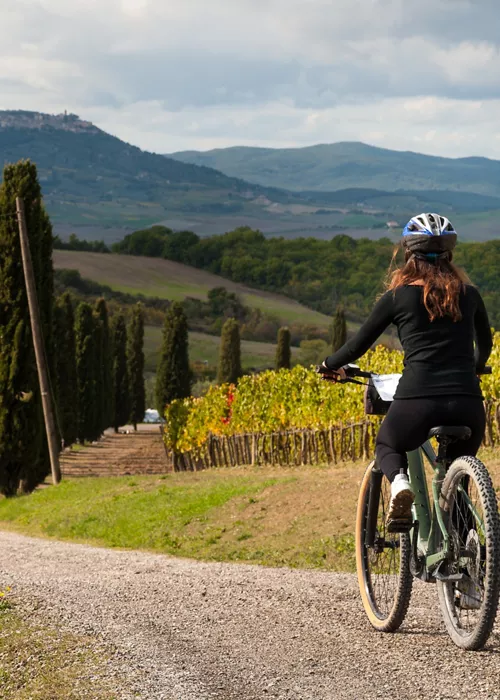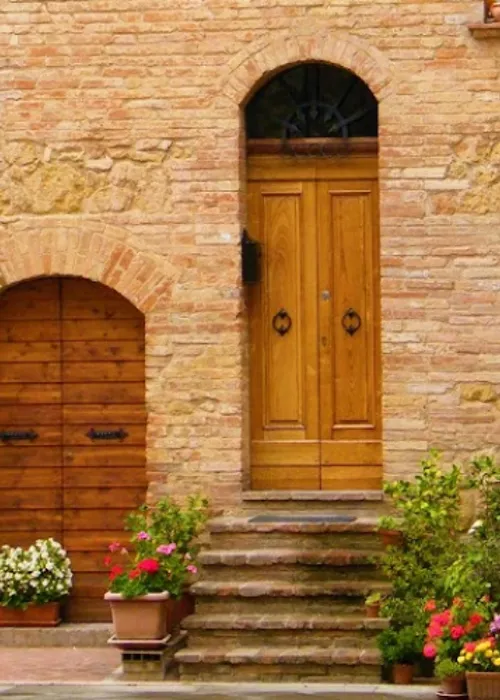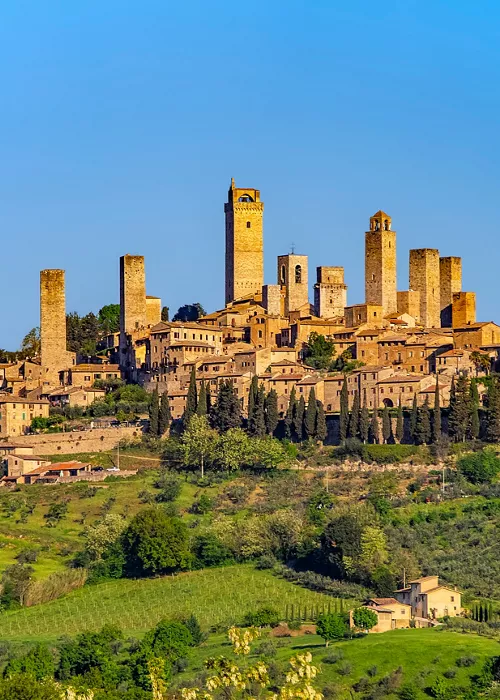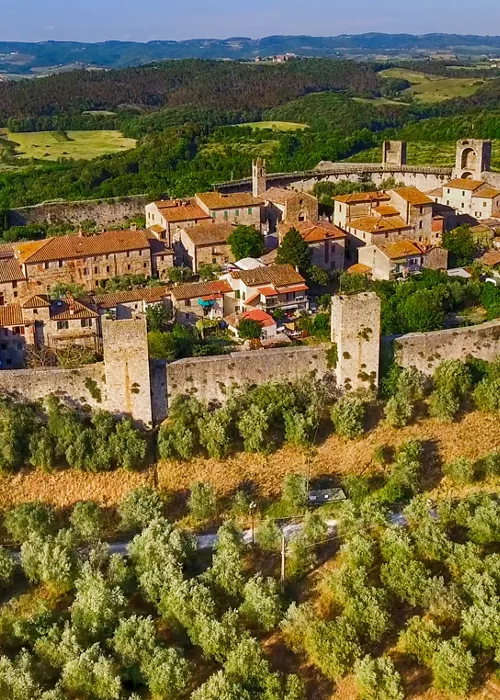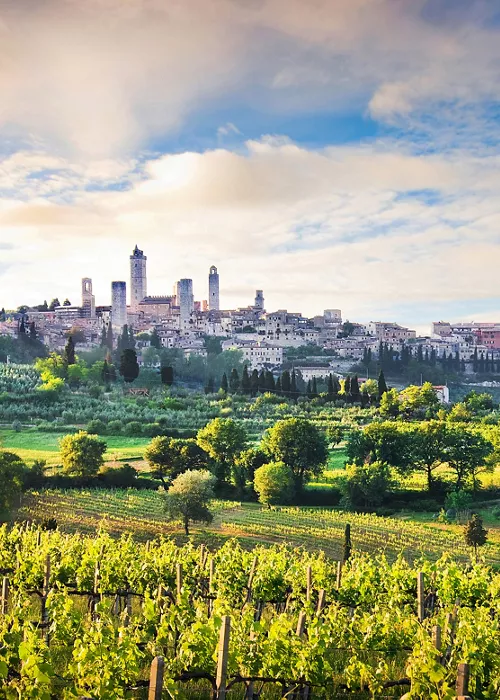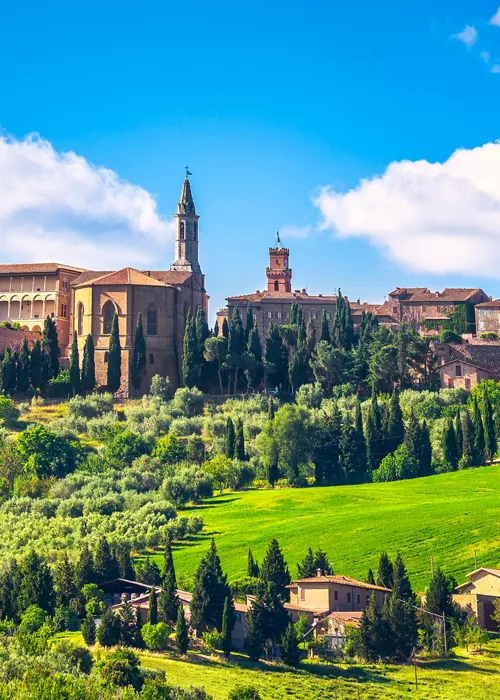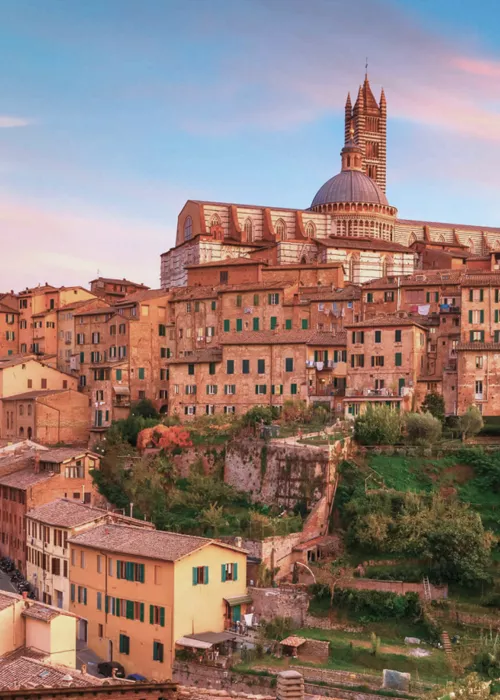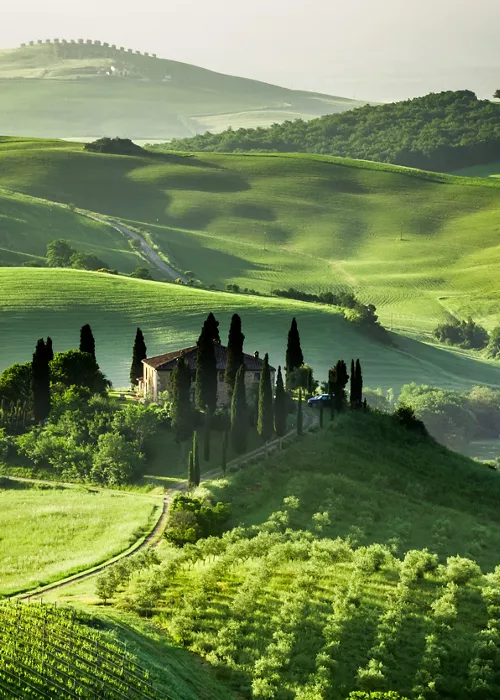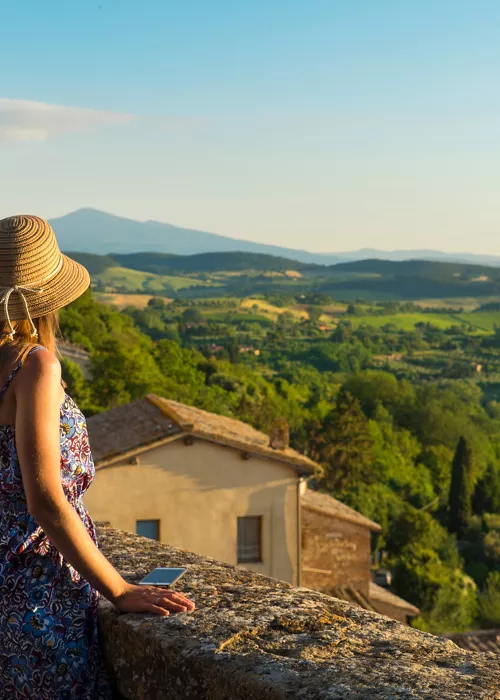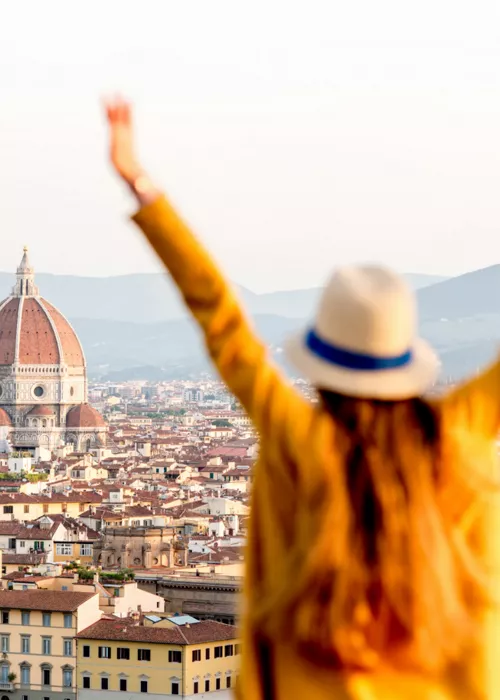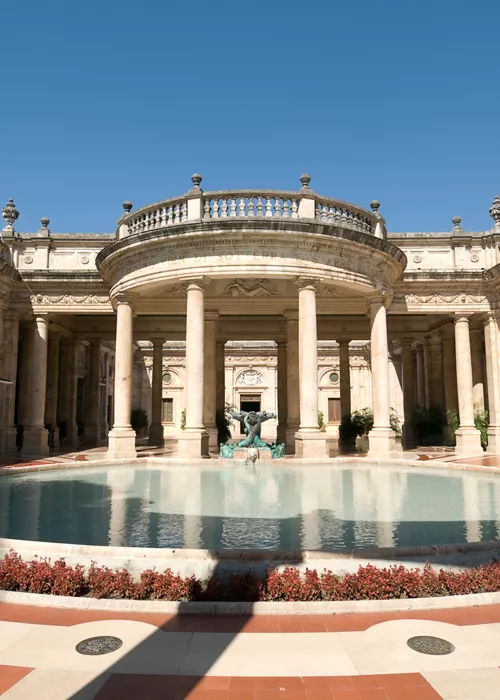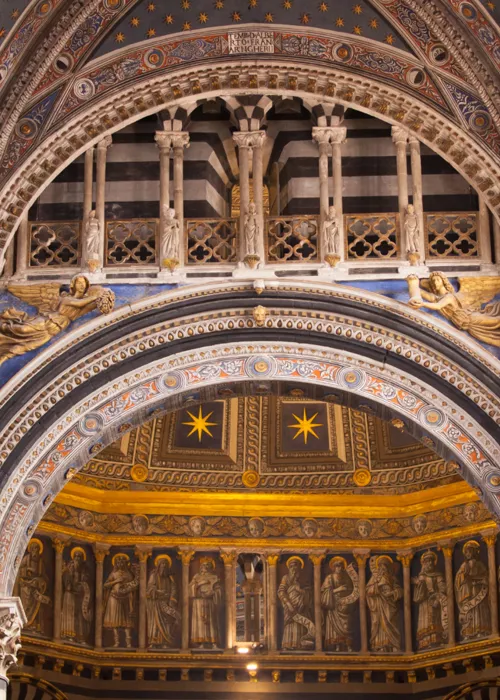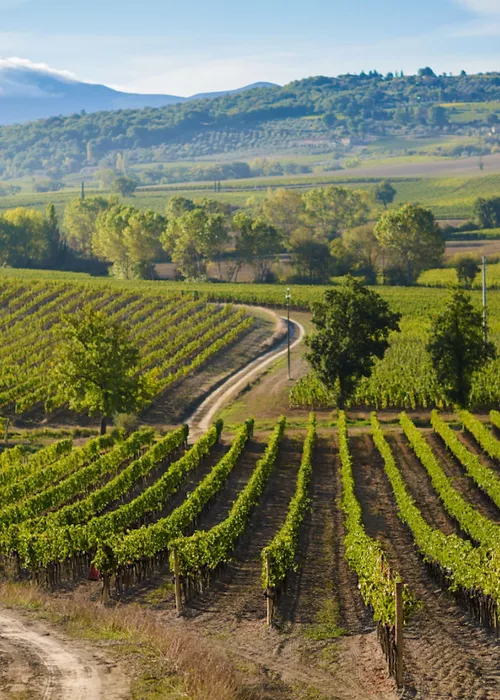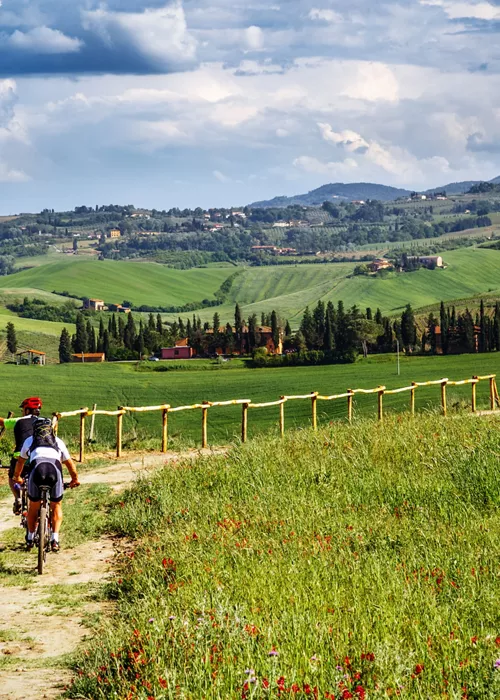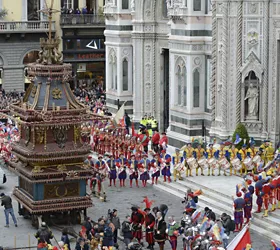In the Val d'Orcia, in Bagno Vignoni, a land of water and wine
3 minutes
Is an astonishing 50-metre by 30-metre stone basin into which hot spring water, at 49 degrees centigrade, has been gushing since Etruscan times.
Today, it is no longer possible to bathe in it as St Catherine, Lorenzo the Magnificent or the pilgrims of the Via Francigena once did.
To compensate, the thermal hotels in the village provide all kinds of wellness facilities.
All the heat of the volcano
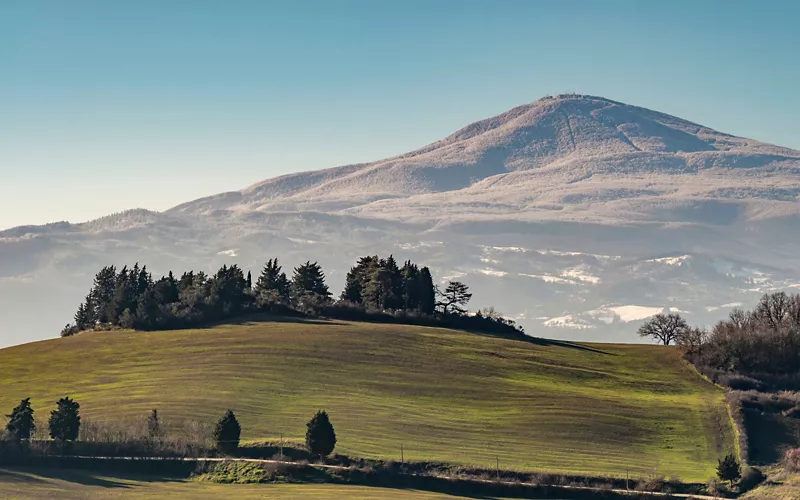
It is the volcanic nature of the nearby Mount Amiata that feeds the Bagno Vignoni spring, rich in magnesium and calcium sulphates, and beneficial for diseases of the bones, skin and mucous membranes. The water that emerges from the square is channelled into a small moat that carries it, still warm, out of the town and into the Orcia river that flows into the valley below.
In the past, the water fed a system of mills that operated perfectly well even in summer, thanks to the constant flow of water from the spring. Today, the mill path is a pleasant and very scenic walk on the rock of Castiglione d'Orcia.
A hot spring in the middle of the woods
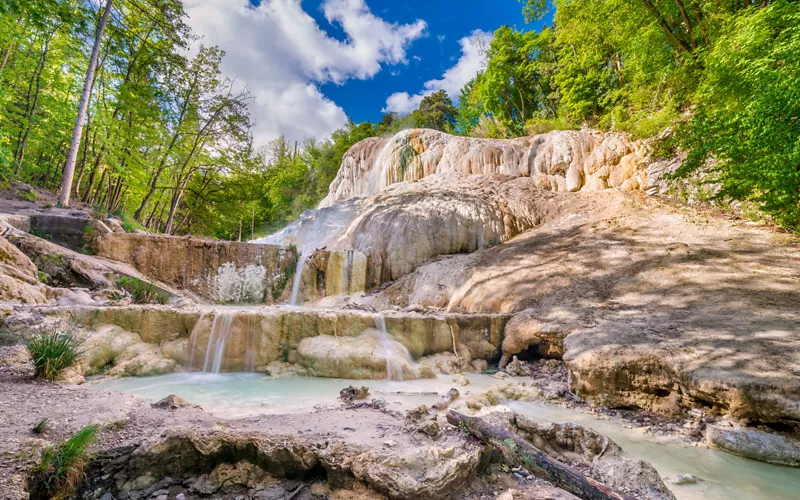
Another open-air thermal spring is that of Bagni San Filippo, a small town on the slopes of Mount Amiata, 16 kilometres from Bagno Vignoni. Here, the waters that gush from the belly of the mountain drain into the Fosso Bianco and form a hot river that flows through the thick forest. The waters, where they flow, leave whitish calcareous formations of the most bizarre shapes, among pools and waterfalls in which you can dive freely with free access. The warmest water is found in the vicinity of the so-called Balena Bianca (White Whale), a limestone formation resembling the mouth of a whale. The site is always popular with both tourists and the inhabitants of the Val d'Orcia.
Heading up the mountain, you reach Abbadia San Salvatore, where the beautiful Mining Museum tells another tale of the mountain, that of the extraction of cinnabar to produce mercury. It is an activity that, even with its burden of toil and disease, has shaped the history of this community for a century.
Val D'Orcia, a World Heritage Site
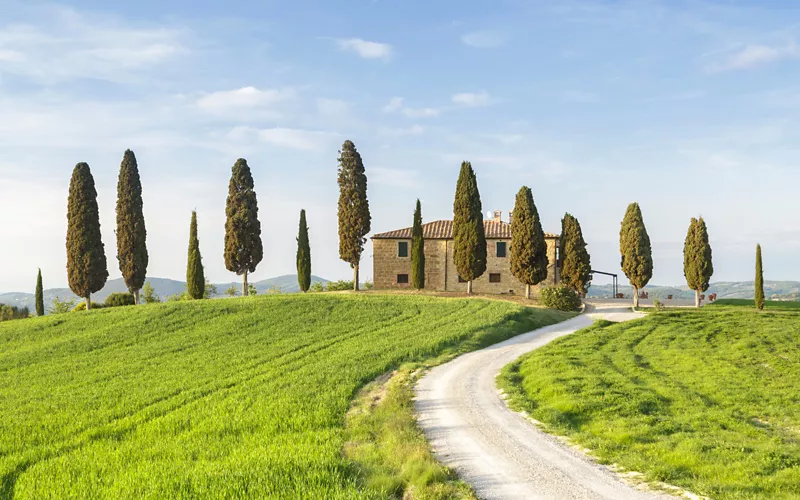
A stay in Bagno Vignoni allows you to explore the beautiful area of the Val d'Orcia, which is a Unesco World Heritage cultural site as "an outstanding example of the redesign of the landscape in the Renaissance, illustrating the ideals of good governance in the 14th and 15th centuries of the Italian city-state and the aesthetic research that drove its conception... The Val d'Orcia, a combination of art and landscape, geographical space and ecosystem, is the embodiment of wonderful natural features, but also the result and evidence of the people who live there".
Pienza, the ideal city
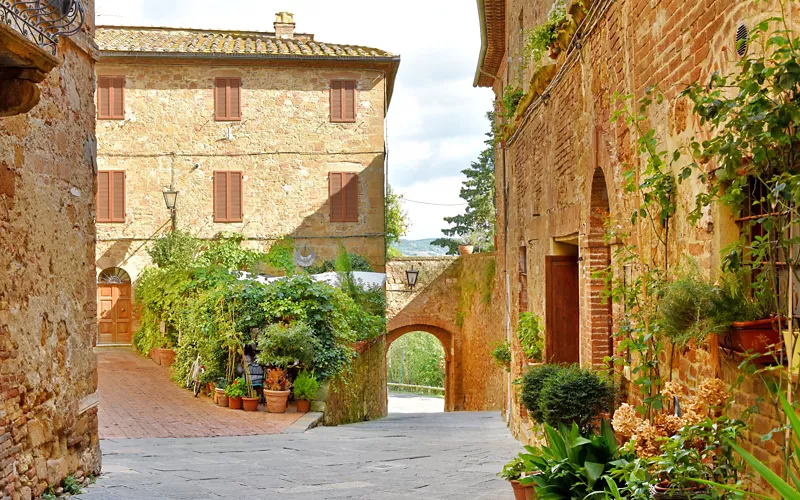
To pursue this aesthetic quest, one must stop and visit the most beautiful villages in the Val d'Orcia. Like Pienza, the ideal city as dreamed of and built by Pope Pius II, born Enea Silvio Piccolomini, who wanted to put the humanist ideals of beauty and harmony into practice. Today it is pure pleasure to stroll through its alleys, visit the cathedral, one of the most important churches of the Italian Renaissance, and have lunch or dinner in the intimate little squares.
One kilometre from Pienza, immersed in the countryside, is the ancient Romanesque parish church of Corsignano, where no less than two popes were baptised. Its origins are so ancient that one of its capitals depicts the serpent regulus, a divinity of the pagan world that has long coexisted here with the Christian faith.
Also worth seeing is Monticchiello, where the tradition of popular theatre is still alive: in August, the entire village participates in the staging of a performance written, directed and performed by its inhabitants.
Montalcino’s gold

The fame of its red wine precedes the reputation of the village. After all, in the pretty historic centre with its wonderful views of the surrounding valleys, everything speaks of the Brunello di Montalcino wine: from its historic bar, the Art Nouveau-style Caffè Fiaschetteria Italiana 1888, to the museum L'oro di Montalcino - Il tempio del Brunello, set up in the Cloister of San'Agostino, which recounts the inseparable bond between the wine and its territory.

